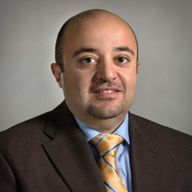Abstract:
Dr. Komrokji delved into the revised classifications for Myelodysplastic Syndromes (MDS) unveiled at the International Congress. The discussion contrasted the 2016 and 2022 editions, spotlighting new molecularly defined subcategories, such as SF3B1 MDS and biallelic p53, alongside morphological distinctions like MDS with increased blast types, hypoplastic MDS, and MDS with fibrosis. Dr. Komrokji’s insights underscored the evolving MDS classification landscape and promising therapeutic frontiers, marking a pivotal advancement in understanding MDS and refining patient care.
01
Oncology Frontier: Our first question is that World Health Organization updated the classification of MDS, first of all, could you analyze the important differences between the edition of 2016 and edition of 2022 MDS classification.
Dr. Komrokji: I think this is an important question, because in 2022, now we have two classifications. The WHO and the ICC. The WHO in the newer version have revised some of the categories. It went to first what we call molecularly defined sub categories of MDS. Now, we have, in addition to del(5q) (deletion 5q) that existed in the 2016 version, we have SF3B1 MDS as well as biallelic p53. So we have three categories that are molecularly defined. That’s new in the WHO 2022 criteria.
Then based on the morphology, the WHO still maintained ring sideroblasts. They renamed MDS with increased blast, we used to call it MDS with excess blast. Now it’s called MDS with increased blast type one and type two. And finally, they introduced two newer categories. If patients have less than 5 % myeloblast, but the bone model is hypocellular. So we have a hypoplastic MDS. If the myeloblast are increased and there is fibrosis, then that’s MDS with fibrosis. So those are really the major changes between the 2016 and the 2022 criteria.
02
Oncology Frontier: Your team used the classification of MDS in WHO 2022 and ICC 2022 to analyze the prognosis and survival of patients with MDS. Could you please share more details?
Dr. Komrokji: We try to provide the evidence based or data driven evidence in attempt to harmonize those two classifications. It’s not good to have two different classifications for one disease. And the idea is to bring them back together. A classification should reflect the biology of the disease or common features, not just the prognosis.
We tried to collect a large data set between Europe and USA. We were able to get together almost 7,000 MDS patients, which is probably the largest MDS database conducted to date. We clearly saw that, for example, MDS with SF3B1 has the best outcome. And it’s correct in both groups. Biallelic p53 has the worst outcome. There are some differences between the two that we probably need to bring them together and Del(5q) has good outcome. Then we saw that ring sideroblasts without SF3B1 is not as good as with SF3B1. So probably that can be dropped from the WHO. While a presence of dysplasia, multi lineage or single lineage displays that didn’t matter. So that’s from the ICC. So we are keeping it. There is a little bit still uncertainty about the best cut off on the blast percentage. So that’s yet to be determined. And then finally, the fibrosis or scarring in the bone model, we were able to show that it is important and is affected with worse outcome. At the end, we are trying to harmonize those two classifications and conceptually think of the classification in a different way. So I presented like some suggestions or proposals for future classification where we can think of a chronic phase MDS those that have low blasts, del(5q), SF3B1, then a more aggressive MDS or accelerated, like if the myeloblast are increased, that p53, the MDS with fibrosis, and then finally, the AML from MDS.
03
Oncology Frontier: Would you please talk about the advances of MDS treatment at this EHA congress?
Dr. Komrokji: I think this year had been really a breakthrough in the management of lower risk MDS particularly. So we have two studies presented at this EHA. We heard the presentation on the imetelstat and lower risk MDS. This is a randomized phase three clinical trial that showed imetelstat that was active leading to transfusion independency in almost 40% of the patients.Durable responses are more than a year. Responses, even in patients that are needing a lot of blood transfusions at baseline are suggesting that the treatment could also alter the natural history of the disease, because we are seeing reduction in the allele burden of certain mutations. So I think this presentation and the subsequent publication will hopefully lead to the approval of the drug. So that’s one of the major things in the lower risk.
The other one we are gonna hear this afternoon on luspatercept, a study called COMMANDS study. Again, a randomized phase three clinical trial will be presented at the plenary session today, randomizing patients between erythroid stimulating agents and luspatercept in the upfront setting. We heard some of the data a week ago. The study met the primary endpoint that is doubling to the responses than erythroid stimulating agents, more durable responses. So this also could be a practice changing clinical trial.We heard today also during the same session, some kind of interesting data about total oral therapy for higher risk MDS with oral decitabine/cedazuridine combined with venetoclax, again small study with 40, 50 patients, but showing promising activity, a very good bridge to transplant.
So I think in the future we made it our patients with a total oral regimen, even the higher risk. And finally, in the same session, we heard a little bit more about lenalidomide for del(5q) that sometimes discontinuation could be a possibility. Although, like in the past, the classical dogma was to continue the treatment all the time. But now it seems that there is a subset of patients that treatment could be discontinued, which will have practical implications in everyday practice.

TAG: EHA 2023, Interview, Hematological Malignancy, MDS


